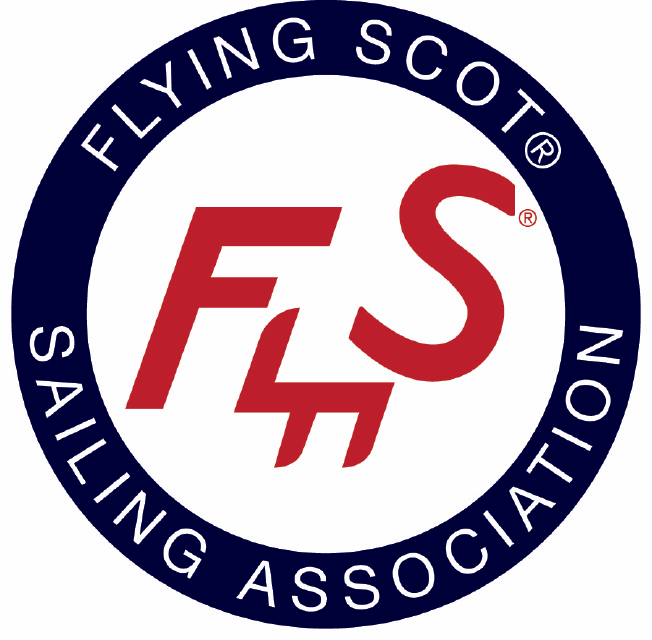Forestay extension wearing into Bow Plate
Submitted by Big Dave on Wed, 04/23/2014 - 15:48
I recently became the happy owner of FS 2363. I've been out of sailing for 16 years so I'm thrilled to be back. I've been busily reparing and upgrading to get her ready for my first sail with her. I noticed the forestay extension had a broken strand so I've ordered a new, oversized, replacement but I also noticed the hole in the bow plate has been damaged over the years by the wire sawing into it. Can someone help me understand how the bow plate is supposed to work with the forestay extension? Does it simply go thru the hole and rub on the plate or is there supposed to be some sort of chafe reducing wheel or gromment or something to keep them from wearing on each other?
Thanks!
Dave

glennw_fs
Wed, 04/23/2014 - 16:37
Permalink
Unfortunately
The design is to allow the forestay tang to rub and eventually wear through the bow handle through hole.
I have a newer Scot and have my tang wire sheathed in a wire cover to minimize this chafing. I got mine from West Marine: http://www.westmarine.com/davis-instruments--snap-on-cable-covers--P002_...
Big Dave
Wed, 04/23/2014 - 17:21
Permalink
Thanks Glenn
Ok, I was afraid of that! Thanks Glenn!
Julian
Thu, 04/24/2014 - 06:12
Permalink
Does it last ?
Glenn,
We have 5 flying Scots in our club, all of different vintage. A couple have very deep grooves in the plate and we will replace the plates.
If the forestay can cut a groove in the metal, is a vinyl cover robust enough ? How long has it lasted for you ?
Julian
glennw_fs
Thu, 04/24/2014 - 09:19
Permalink
Lasts pretty well
Julian,
It lasts remarkably well, depending on whether there is a groove cut or not.
My old Scot had a groove about 1/8" when I got her. I filed the groove edges smooth and got about 2 seasons per cover with her.
On my new Scot, which had a pristeen through hole, I've gotten 4 seasons on the cover, so far.
I use a snug rig jib. I don't know whether a tight or loose rig would be better or worse.
BTW the integrity of the forestay tang is a bigger concern than damage to the through hole.
Julian
Thu, 04/24/2014 - 14:35
Permalink
Thanks, I'll try it
A lot less expensive than a new plate. My problem is that the worn groove is narrow as well as deep and the forestay jams in it preventing the toggle bar to work, thus not spreading the laod between the forestay and jib halyard.
glennw_fs
Thu, 04/24/2014 - 14:56
Permalink
Narrow Channel :-(
Having a narrow channel dug into the plate could be a problem.
I was fortunate with my old Scot that it was more of an indentation so I didn't have the jamming issue.
Good luck and let us know how it turns out.
Big Dave
Mon, 04/28/2014 - 10:42
Permalink
Jamming in the groove/Broken strands
I was worried about my new upsized 1/8" wire jamming in the groove so I bought a small chainsaw file one size up from 1/8" (5/32"?) and made the groove larger and fairer. Should last another 41 years!
BTW, the old forestay extension had several broken strands that were not visible until I removed it from the boat. It would be a good inspection item for you guys with older boats. Feels great to have that nice new shiny cable installed!
Big Dave #2363
sawyerspadre
Thu, 04/24/2014 - 20:34
Permalink
The toggle is pegged...
Only on the loose rig is there any balance of tension between the forestay and the jib halyard. For snug and tight rigs, the forestay holds the tension, and the halyard just adjusts the luff tension of the jibcloth . Once you set the tension, the forestay toggle should stay pegged.
Julian
Mon, 04/28/2014 - 07:04
Permalink
Can you explain "pegged" please
Phil,
I have always been told that the "T" toggle should be horizontal and balanced. I am not sure what you mean by "peged". could you clarify this please?
JulianFleet 203
sawyerspadre
Mon, 04/28/2014 - 07:44
Permalink
See Hot Wheelz
The toggle doesn't move, it's maxed out with the forestay side up, and the halyard side down, on the snug and tight rigs. Only on looserig does it move once the rig is up.
hot wheelz
Fri, 04/25/2014 - 19:28
Permalink
No groove
Our 8 year old Scot with snug rig has no groove in the bow plate, as the toggle is 2-blocked and does not "saw" up & down in use. Majority of the tension is on the forestay side, forcing the toggle maximum up on the forestay side against the stops so it cannot move or make a groove in the bow plate
Since the jib tack side of the toggle is max down, This has the added racing advantage of lowering the tack of the jib as low as is legal by class rules. Lower is more efficient.